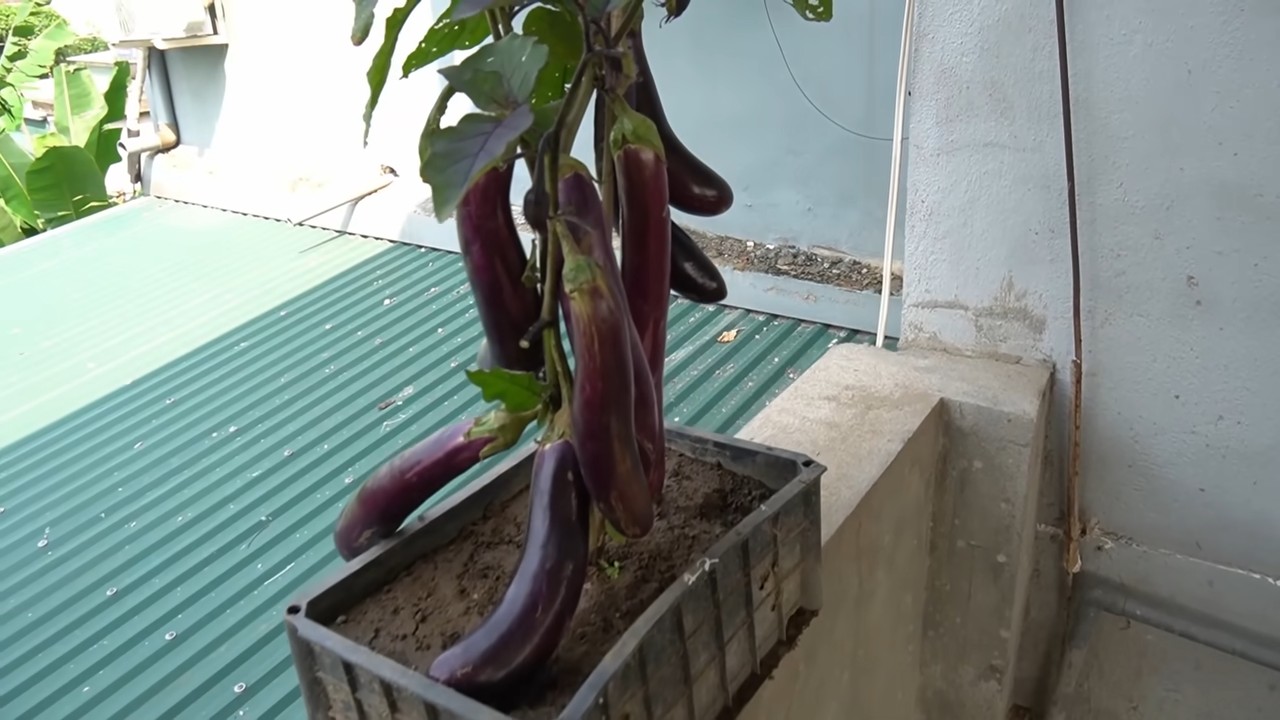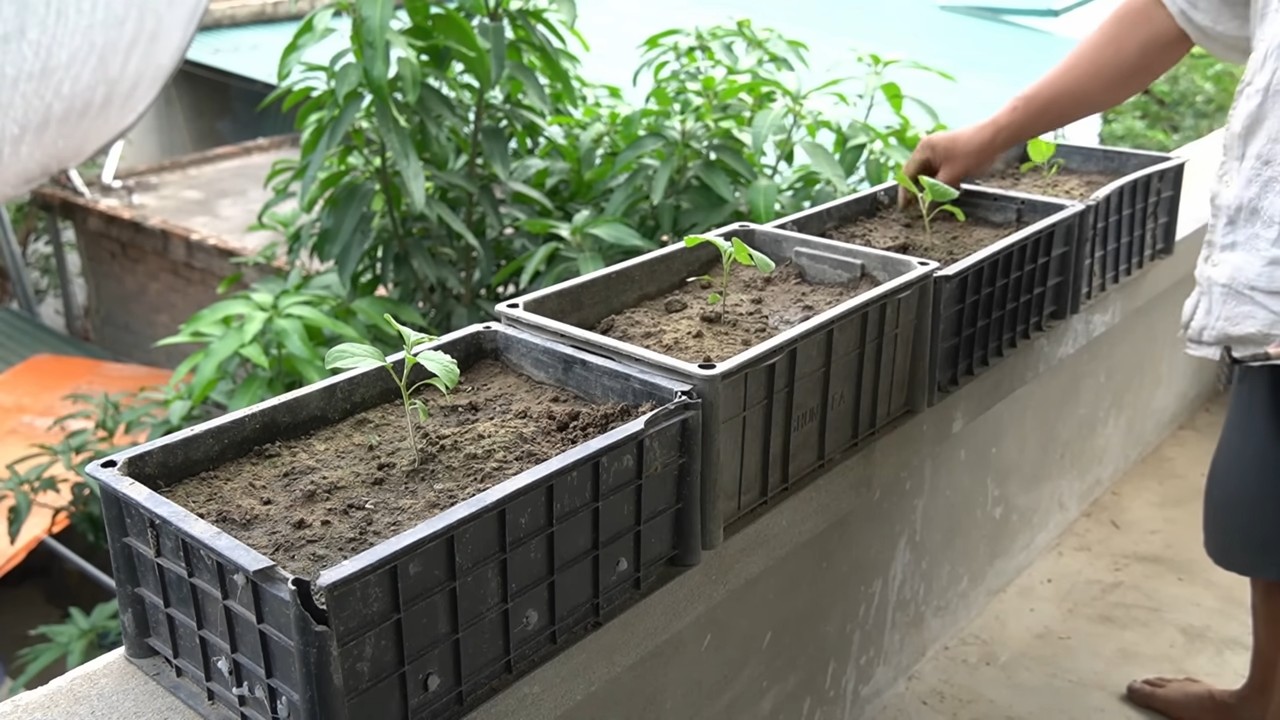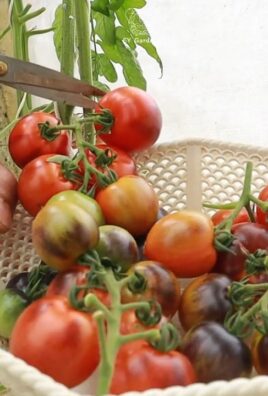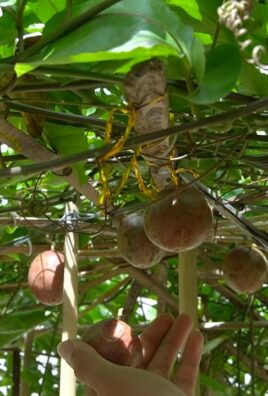Bucket Gardening Eggplant Harvest: Imagine sinking your teeth into a juicy, sun-ripened eggplant, bursting with flavor, knowing you grew it yourself, right in your own backyard! Sounds idyllic, doesn’t it? For centuries, cultivating our own food has been a deeply satisfying human endeavor. From ancient Roman kitchen gardens to the victory gardens of World War II, growing your own produce connects us to a rich history of self-sufficiency and a deeper understanding of where our food comes from.
But let’s face it, not everyone has acres of land to dedicate to a sprawling vegetable patch. That’s where the magic of bucket gardening comes in! This DIY guide is your passport to a bountiful bucket gardening eggplant harvest, even if you’re short on space or time. We’ll unlock the secrets to successfully growing eggplants in buckets, from choosing the right variety to nurturing your plants for maximum yield.
Why is this DIY trick a game-changer? Because it empowers you to enjoy fresh, organic eggplants without the hassle of traditional gardening. No more battling weeds in a vast garden bed or worrying about soil quality. With bucket gardening, you have complete control over your growing environment, making it easier than ever to achieve a thriving eggplant harvest. So, grab your buckets, let’s get our hands dirty, and embark on this exciting gardening adventure together!

DIY Bucket Gardening: A Bountiful Eggplant Harvest
Hey there, fellow gardening enthusiasts! I’m so excited to share my tried-and-true method for growing delicious eggplants right in buckets. Forget sprawling gardens – this is perfect for patios, balconies, or even just a sunny corner of your yard. Trust me, with a little love and these simple steps, you’ll be harvesting gorgeous eggplants in no time!
Why Bucket Gardening for Eggplants?
Before we dive in, let’s talk about why bucket gardening is fantastic for eggplants:
* Space-Saving: Ideal for small spaces, apartments, or anyone who wants to garden without a traditional plot.
* Portability: Move your plants to chase the sun or protect them from harsh weather.
* Control: You have complete control over the soil quality and drainage.
* Less Weeding: Buckets minimize weed growth compared to in-ground gardening.
* Early Harvest: The soil in buckets warms up faster, leading to an earlier harvest.
What You’ll Need
Gather your supplies – it’s like prepping for a culinary masterpiece, but with dirt!
* Buckets: 5-gallon buckets are the sweet spot. Make sure they’re food-grade if you’re using recycled ones.
* Eggplant Seedlings: Choose your favorite variety! I personally love ‘Black Beauty’ for its classic flavor and prolific yield.
* Potting Mix: A high-quality potting mix is crucial. Avoid garden soil, as it can compact in containers.
* Slow-Release Fertilizer: This will provide a steady stream of nutrients throughout the growing season.
* Watering Can or Hose: Essential for keeping your plants hydrated.
* Trowel or Small Shovel: For transplanting your seedlings.
* Drill (Optional): For adding extra drainage holes.
* Stakes or Tomato Cages: Eggplants can get heavy, so support is key.
* Mulch: Straw, wood chips, or even dried leaves will help retain moisture and suppress weeds.
* Gardening Gloves: To keep your hands clean and protected.
Step-by-Step Guide to Bucket Eggplant Success
Okay, let’s get our hands dirty!
1. Preparing Your Buckets
This is the foundation of our eggplant empire!
1. Clean the Buckets: If you’re using recycled buckets, give them a good scrub with soap and water to remove any residue.
2. Drill Drainage Holes: If your buckets don’t have drainage holes, drill several (about 1/2 inch in diameter) in the bottom. This is crucial to prevent waterlogging, which can lead to root rot. I usually drill about 4-5 holes.
3. Consider Liner (Optional): While not essential, lining the bottom of the bucket with landscape fabric can help prevent soil from washing out through the drainage holes.
2. Planting Your Eggplant Seedlings
Time to give your little eggplants a new home!
1. Fill the Bucket: Fill the bucket about two-thirds full with your potting mix.
2. Add Slow-Release Fertilizer: Sprinkle a generous amount of slow-release fertilizer into the potting mix, following the instructions on the package. This will provide a steady supply of nutrients to your eggplant.
3. Dig a Hole: Dig a hole in the center of the bucket that’s large enough to accommodate the root ball of your eggplant seedling.
4. Gently Remove the Seedling: Carefully remove the eggplant seedling from its container, being gentle with the roots. If the roots are tightly bound, gently loosen them with your fingers.
5. Plant the Seedling: Place the seedling in the hole, ensuring that the top of the root ball is level with the surrounding soil.
6. Backfill with Soil: Fill in the hole with potting mix, gently firming the soil around the base of the plant.
7. Water Thoroughly: Water the newly planted seedling thoroughly until water drains out of the drainage holes. This helps settle the soil and encourages root growth.
3. Providing Support
Eggplants can get top-heavy, so staking or caging is a must!
1. Install Stakes or Cages: Insert a sturdy stake or tomato cage into the bucket next to the eggplant seedling. Make sure the stake is deep enough to provide adequate support.
2. Tie the Plant (if using stakes): As the eggplant grows, gently tie the stems to the stake using soft twine or plant ties. This will prevent the plant from toppling over, especially when it’s laden with fruit.
4. Watering and Feeding
Happy plants need consistent hydration and nourishment!
1. Water Regularly: Eggplants need consistent moisture, especially during hot weather. Water deeply whenever the top inch of soil feels dry to the touch. Avoid overwatering, as this can lead to root rot.
2. Fertilize Regularly: In addition to the slow-release fertilizer, you can supplement with a liquid fertilizer every 2-3 weeks. Choose a fertilizer that’s high in phosphorus and potassium, which are essential for fruit production. Follow the instructions on the fertilizer package.
3. Monitor Soil Moisture: Stick your finger into the soil to check the moisture level. If it feels dry an inch or two down, it’s time to water.
5. Sunlight and Location
Sunshine is key to eggplant success!
1. Choose a Sunny Spot: Eggplants need at least 6-8 hours of direct sunlight per day. Choose a location that receives plenty of sunshine throughout the day.
2. Protect from Wind: If your area is prone to strong winds, consider placing your buckets in a sheltered location to prevent the plants from being damaged.
6. Mulching
Mulch is your secret weapon for moisture retention and weed control!
1. Apply Mulch: Spread a layer of mulch (straw, wood chips, or dried leaves) around the base of the eggplant plant. This will help retain moisture in the soil, suppress weeds, and regulate soil temperature.
7. Pest and Disease Control
Keep an eye out for unwanted visitors!
1. Inspect Regularly: Regularly inspect your eggplant plants for signs of pests or diseases. Common pests include aphids, flea beetles, and spider mites. Common diseases include powdery mildew and blossom-end rot.
2. Take Action: If you spot any pests or diseases, take action immediately. You can use organic pest control methods, such as insecticidal soap or neem oil, to control pests. For diseases, you can use a fungicide or remove affected leaves.
3. Preventative Measures: Good air circulation and proper watering can help prevent many diseases.
Harvesting Your Eggplants
The moment we’ve all been waiting for!
1. Harvest When Ripe: Eggplants are typically ready to harvest about 60-80 days after transplanting. The fruit should be firm, glossy, and have a deep, rich color.
2. Check the Skin: Gently press the skin of the eggplant. If it springs back, it’s ripe. If it feels hard and doesn’t give, it’s not quite ready.
3. Use Pruning Shears: Use sharp pruning shears or a knife to cut the eggplant from the plant, leaving about an inch of stem attached.
4. Harvest Regularly: Harvest eggplants regularly to encourage the plant to produce more fruit.
Troubleshooting Tips
Even the best gardeners encounter challenges!
* Blossom-End Rot: This is caused by a calcium deficiency. Ensure consistent watering and consider adding calcium to the soil.
* Yellowing Leaves: This could be a sign of overwatering, underwatering, or nutrient deficiency. Adjust your watering schedule and fertilize as needed.
* Pest Infestations: Regularly inspect your plants and take action immediately if you spot any pests.
Choosing the Right Eggplant Variety
There are so many amazing eggplant varieties to choose from! Here are a few of my favorites:
* Black Beauty: A classic, reliable variety with large, dark purple fruit.
* Ichiban: A Japanese variety with long, slender, dark purple fruit.
* Fairy Tale: A beautiful variety with small, striped purple and white fruit.
* Rosa Bianca: An Italian heirloom variety with round, lavender and white fruit.
Extra Tips for Eggplant Success
* Rotate Your Crops: Avoid planting eggplants in the same spot year after year to prevent soilborne diseases.
* Companion Planting: Plant basil, marigolds, or thyme near your eggplants to deter pests.
* Pinch Off Suckers: Remove any suckers (small shoots that grow from the base of the plant) to encourage more fruit production.
Growing eggplants in buckets is a rewarding experience. With a little

Conclusion
So, there you have it! Transforming a simple bucket into a thriving eggplant haven is not only achievable but incredibly rewarding. We’ve walked you through the process, highlighting the ease and cost-effectiveness of this method. But why is this DIY trick a must-try? Because it democratizes gardening. It removes the barriers of large yards, expensive equipment, and extensive gardening knowledge. Whether you live in an apartment with a sunny balcony or a house with limited garden space, bucket gardening offers a tangible way to connect with nature and enjoy the fruits (or rather, vegetables!) of your labor.
Beyond the accessibility, consider the control you gain. You dictate the soil quality, the watering schedule, and the pest management, ensuring your eggplants receive the optimal care they need to flourish. This level of control often translates to healthier, more abundant harvests compared to traditional in-ground gardening, especially in areas with poor soil conditions. Plus, the portability of buckets allows you to chase the sun, moving your plants to the best possible location throughout the day.
But the benefits don’t stop there. Bucket gardening is an environmentally conscious choice. It reduces the need for tilling, minimizing soil erosion and carbon emissions. It also encourages the use of recycled materials, giving new life to old buckets and reducing waste. And let’s not forget the sheer joy of watching your eggplants grow from tiny seedlings to mature, vibrant vegetables, ready to be transformed into delicious meals.
Ready to take your bucket gardening to the next level? Consider these variations:
* Companion Planting: Enhance your eggplant’s growth by planting basil or marigolds in the same bucket. These companions deter pests and attract beneficial insects.
* Vertical Support: As your eggplant grows, it may need support. Use bamboo stakes or a small trellis to prevent the branches from breaking under the weight of the fruit.
* Fertilizer Experimentation: While we recommended a balanced fertilizer, feel free to experiment with different formulations to see what works best for your specific soil and growing conditions. Consider adding compost tea for an extra boost of nutrients.
* Variety Selection: Don’t limit yourself to just one type of eggplant! Explore different varieties, such as Japanese eggplant, Thai eggplant, or even ornamental eggplant, to add visual interest and culinary diversity to your garden.
* Watering System Upgrade: If you’re prone to forgetting to water, consider a simple self-watering system using a plastic bottle or a wicking system. This will help maintain consistent moisture levels and prevent your eggplants from drying out.
Ultimately, the best way to discover the magic of bucket gardening is to dive in and try it for yourself. We encourage you to embrace the process, experiment with different techniques, and learn from your experiences. And most importantly, we want to hear about your successes (and even your challenges!). Share your photos, tips, and stories with us in the comments below. Let’s build a community of bucket gardening enthusiasts and inspire others to grow their own food, one bucket at a time. Your journey to a bountiful eggplant harvest starts now! Let us know how your **bucket gardening eggplant harvest** goes!
Frequently Asked Questions (FAQ)
What size bucket is best for growing eggplants?
The ideal bucket size for growing eggplants is at least 5 gallons, but a 10-gallon bucket is even better. Larger buckets provide more room for the roots to grow and allow for better water retention, which is crucial for eggplant development. Smaller buckets may restrict root growth, leading to stunted plants and reduced yields. Ensure the bucket has drainage holes to prevent waterlogging.
What type of soil should I use for bucket gardening eggplants?
A well-draining potting mix is essential for successful bucket gardening. Avoid using garden soil, as it tends to compact in containers and doesn’t provide adequate drainage. A good potting mix should contain a blend of peat moss, perlite, and vermiculite. You can also amend the potting mix with compost to provide additional nutrients. Aim for a slightly acidic pH level, around 6.0 to 6.8, for optimal eggplant growth.
How often should I water my bucket gardening eggplants?
Watering frequency depends on several factors, including the weather, the size of the bucket, and the stage of plant growth. Generally, you should water your eggplants when the top inch of soil feels dry to the touch. During hot, dry weather, you may need to water daily or even twice a day. Avoid overwatering, as this can lead to root rot. Ensure the water drains freely from the drainage holes. A good rule of thumb is to water deeply and less frequently, rather than shallowly and more often.
How much sunlight do eggplants need in a bucket garden?
Eggplants are sun-loving plants and require at least 6-8 hours of direct sunlight per day to thrive. Choose a location for your bucket garden that receives ample sunlight throughout the day. If you live in a particularly hot climate, you may need to provide some afternoon shade to prevent the plants from overheating. If you don’t have access to enough natural sunlight, you can supplement with grow lights.
What kind of fertilizer should I use for bucket gardening eggplants?
Eggplants are heavy feeders and require regular fertilization to produce abundant harvests. Start with a balanced fertilizer (e.g., 10-10-10) at planting time, following the instructions on the label. As the plants begin to flower and fruit, switch to a fertilizer with a higher phosphorus content (e.g., 15-30-15) to promote fruit development. You can also supplement with compost tea or liquid seaweed extract to provide additional nutrients. Avoid over-fertilizing, as this can lead to excessive foliage growth and reduced fruit production.
How do I protect my bucket gardening eggplants from pests and diseases?
Regularly inspect your plants for signs of pests and diseases. Common pests that affect eggplants include aphids, flea beetles, and spider mites. You can control these pests with insecticidal soap, neem oil, or by handpicking them off the plants. Diseases that can affect eggplants include fungal diseases like powdery mildew and blossom end rot. Prevent fungal diseases by providing good air circulation, avoiding overhead watering, and applying a fungicide if necessary. Blossom end rot is caused by calcium deficiency and can be prevented by ensuring the soil has adequate calcium levels and by watering consistently.
How do I know when my eggplants are ready to harvest from my bucket garden?
Eggplants are typically ready to harvest when they are firm, glossy, and have reached their mature size and color. The skin should be smooth and unblemished. Gently press the eggplant with your thumb; if it gives slightly, it’s ready to harvest. Use a sharp knife or pruning shears to cut the eggplant from the plant, leaving a short stem attached. Harvest regularly to encourage continued fruit production. Overripe eggplants will become seedy and bitter.
Can I grow multiple eggplant plants in one bucket?
While it’s technically possible to grow multiple eggplant plants in a single large bucket (e.g., 20 gallons or larger), it’s generally not recommended. Eggplants need ample space for their roots to grow and compete for nutrients and water. Crowding multiple plants in one bucket can lead to stunted growth, reduced yields, and increased susceptibility to pests and diseases. For best results, grow one eggplant plant per bucket.
What are some common problems I might encounter when bucket gardening eggplants?
Some common problems you might encounter include:
* Blossom Drop: This is when the flowers fall off the plant without producing fruit. It can be caused by temperature stress, lack of pollination, or nutrient deficiencies.
* Blossom End Rot: This is a calcium deficiency that causes the bottom of the fruit to rot.
* Pest Infestations: Aphids, flea beetles, and spider mites can damage the plants.
* Fungal Diseases: Powdery mildew and other fungal diseases can affect the leaves and stems.
* Stunted Growth: This can be caused by poor soil, lack of sunlight, or inadequate watering.
By addressing these problems promptly, you can ensure a successful eggplant harvest.
Can I overwinter my bucket gardening eggplants?
In warmer climates (zones 9 and above), you may be able to overwinter your bucket gardening eggplants. Cut back the plants to about 12 inches tall and move them to a sheltered location, such as a garage or greenhouse. Water sparingly during the winter months, allowing the soil to dry out slightly between waterings. In the spring, move the plants back outdoors and resume regular watering and fertilizing. In colder climates, it’s generally not possible to overwinter eggplants successfully.




Leave a Comment